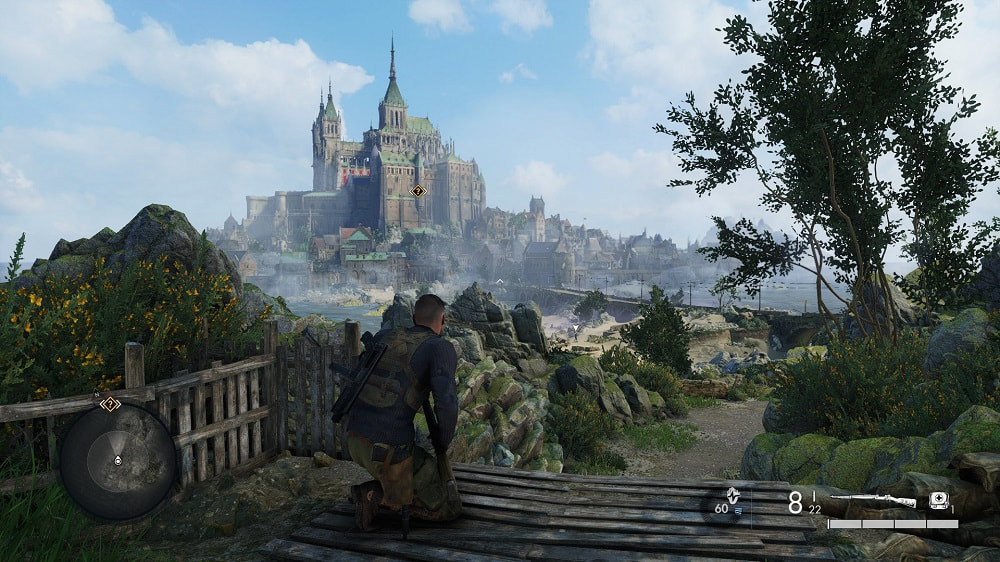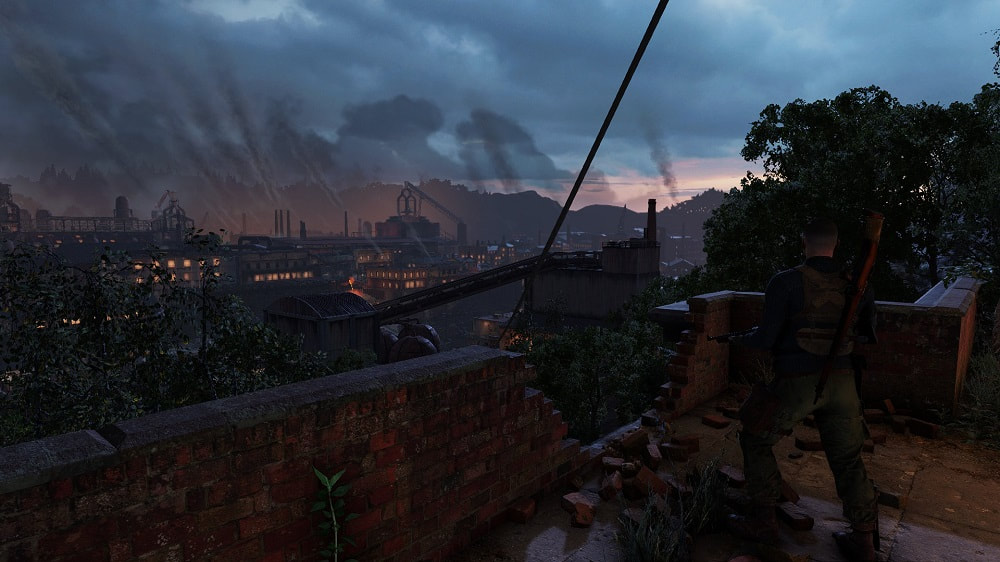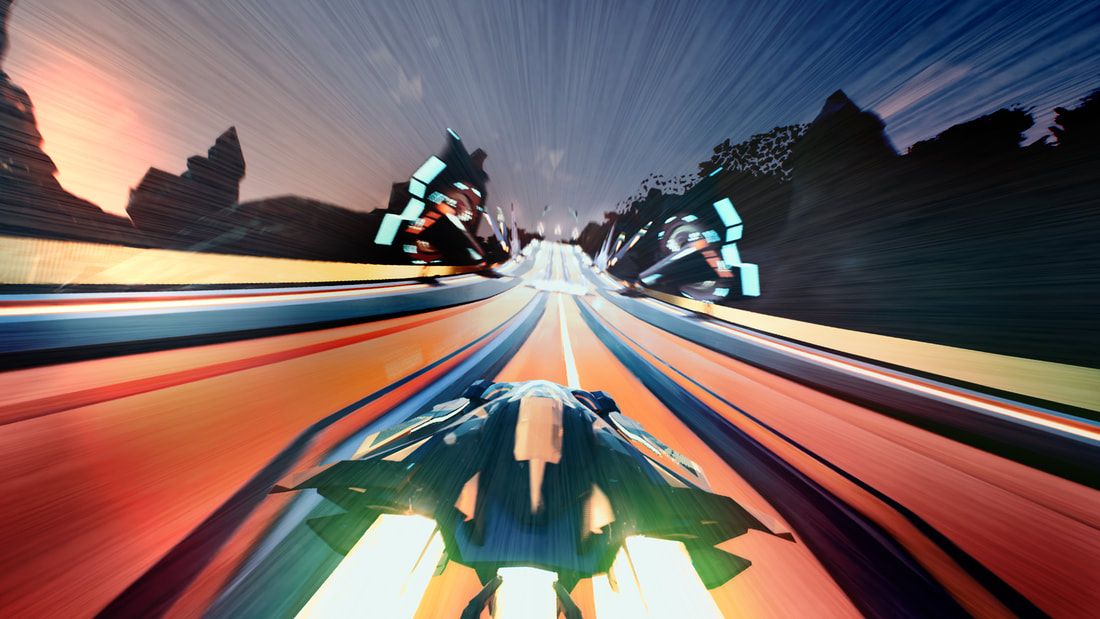|
May’s instalment of “what I played” is a relatively brief one, simply because - well, I didn’t play that many games during the month. What I did unexpectedly get the chance to do is to review the excellent Sniper Elite 5, which is easily one of my favourite games of 2022 so far. I can admit to a surge of local pride, as developers Rebellion are based just down the road from me in Oxford. My full thoughts on the game are available for your reading pleasure at Entertainium.
I of course also found a bit of time to tackle some older games. Thanks to the generous folks at Epic, I was able to play hyper-fast futuristic racer Redout (2016). I took a bloody trip into the distant past with Raven’s badly dated shooter Soldier of Fortune (2000). Finally, I have a few thoughts on the remaster of the end-of-the-world action-adventure Darksiders (2010).
Sniper Elite 5 (2022)
Developed by and published by Rebellion Developments I wasn’t sure I was going to get the chance to review a new game for Entertainium during May, but suddenly a code for Sniper Elite 5 flew into my inbox like a bullet into a Nazi Oberleutnant’s frontal lobe. Rebellion’s stealth-action series has been around since 2005, they’ve been gradually iterating on it since then, and to my mind it’s now officially brilliant. Sniper Elite 5 is an enthralling new entry in the series, which is gripping in both solo play and multiplayer. Sneaking around occupied France in 1944, systematically destroying Nazi schemes is just a blast and I said as much in my review. One thing which is entirely new is the “invasion” mode, through which other players can take on the role of an elite German “Jäger” sniper, rock up in your campaign mission, and try to take you out. This intense cat-and-mouse struggle, weaving around the game’s huge and detailed maps, is endlessly amusing regardless of which role you occupy. This kind of mode has been used recently in games like Deathloop and Elden Ring, but it’s just a perfect fit for the Sniper Elite formula. Managing to take out an enemy sniper is one of the most satisfying things I’ve done in a game so far in 2022. One of my favourite victories took place in “Beaumont-Saint-Denis”, a beautiful fictionalised recreation of the real Mont-Saint-Michel, a tidal island fortress in Normandy. I was playing as the Jäger and when I loaded in, I found a dozen German troops in a town square, locked in a tense firefight with the allied sniper. He was up high, and I couldn’t get a bead on him with my rifle - what I could do was fling a grenade up into his hiding place. The newly improved X-ray kill cam captured his explosive demise in glorious slow motion, the perfect reward for a job well done. Sniper Elite 5 was hardly on my radar back in January, but I think it’s now pipped Sifu to become my game of the year so far - it’s that good.
Redout (2016)
Developed by 34BigThings, published by Nicalis and 505 Games One of the best things about playing games on the PC these days is the freebies given away each week on the Epic Games Store. Now, for some reason there is a faction of players who would rather crawl over broken glass than use the EGS at all, but I’m not about to turn my nose up at free games. Recently, one of those offerings was Redout, a futuristic racing game developed in Italy by 34BigThings. Originally released in 2016, the game is a modern take on the hyper-fast, anti-gravity racers from yesteryear, particularly the Wipeout and F-Zero series, both of which have been pretty much dead for many years now. Redout is exhilarating. With its tracks spread out across an apparently abandoned future Earth, the game is absolutely blisteringly fast. Quite often, travelling at anything less than about 900kph would be considered “slow”. The game also has a colourful, low-poly style which is a good fit for the gameplay, and some excellent music. There are some downsides though - despite the recent EGS giveaway, there are very few players online and the miserly publishers didn’t include any of the DLC. Quite often, this giveaways are done for a specific reason, and so it is in this case: Redout 2 is being released on June 16, so we’ll see what improvements 34BigThings have come up with.
Soldier of Fortune (2000)
Developed by Raven Software, published by Activision Back in the day, Soldier of Fortune was one of the most controversial shooters ever made. This was to do with its novel “GHOUL” system, which allowed graphic dismemberment of the enemies in the game. Limbs and heads can be shot off, bones exposed, and enemies writhe in agony on the ground. Built on top of id Software’s Quake II engine, this was quite a major technical achievement at the time and generated a lot of interest. Over 20 years later, though, there’s really nothing special about it. Honestly, without its major selling point, Soldier of Fortune doesn’t stand up very well in 2022. Raven’s other game of the same year, Star Trek: Voyager - Elite Force, is far more playable. With that being said, Soldier of Fortune does have a historic significance. In 2000, shooters set in the contemporary real world were very rare and the game arguably set the stage for the Call of Duty series and other “modern military shooters”. Raven themselves later became ensnared in that particular money-making machine - they have made nothing but Call of Duty games since 2010. One appealing aspect of Soldier of Fortune is its various real-world settings, which include the New York subway, a slaughterhouse in Sudan, the streets of Tokyo, and a castle in Germany. What Raven was able to achieve with the Quake II engine still impresses in some ways, even if the gameplay and specifically the movement is quite badly dated. Hopefully, the Wisconsin-based studio will be freed up to make something more original again in the future. In the meantime, they have been at the centre of a positive news story, as some of their testers recently voted to form a union.
Darksiders: Warmastered Edition (2010 / 2016)
Developed by Vigil Games, remastered by Kaiko, originally published by THQ, remaster published by THQ Nordic The bankruptcy of THQ in 2013 led to an auction in which their various properties were sold off. Ultimately, Nordic Games acquired several of the prize cuts, including the Darksiders series and, more oddly, the THQ name itself. Now under the name THQ Nordic and under the wing of their all-consuming owners Embracer Group, the company has been kind to the Darksiders games and helped to nurture their budding cult status. One way in which they’ve done this is by remastering the first two games and giving them silly subtitles (the re-release of Darksiders II is called the Deathinitive Edition). The original Darksiders stars War, one of the four Horsemen of the Apocalypse and one of the chunkiest protagonists of all time. The gravelly-voiced swordsman finds himself on a fallen Earth years after armageddon arrived too soon. Essentially, Darksiders is a third-person action game which takes some notable cues from Zelda and occurs in a gloomy, comic book-influenced world. I’ve enjoyed learning the deep combat system, even if it does seem a bit overcomplicated at times. I’d also argue that the game feels too long and drawn-out, sending War on a series of glorified fetch-quests which mix relatively dull puzzles into the more exciting combat sequences. It’s good, but I don’t think it’s great - and time will tell whether I explore the three sequels.
That does it for May - at the end of June, the next instalment will cover SF shooter sidequel Halo 3: ODST (2009) the little-discussed classic Indiana Jones and the Emperor’s Tomb (2003) and, no doubt, some other games. In the meantime, please do check out the writing by myself and colleagues at Entertainium, and if you like what I do please consider supporting via Patreon.
0 Comments
Your comment will be posted after it is approved.
Leave a Reply. |
About
Exploring classic science fiction, with a focus on the 1950s to the 1990s. Also contributing to Entertainium, where I regularly review new games. Categories
All
|




